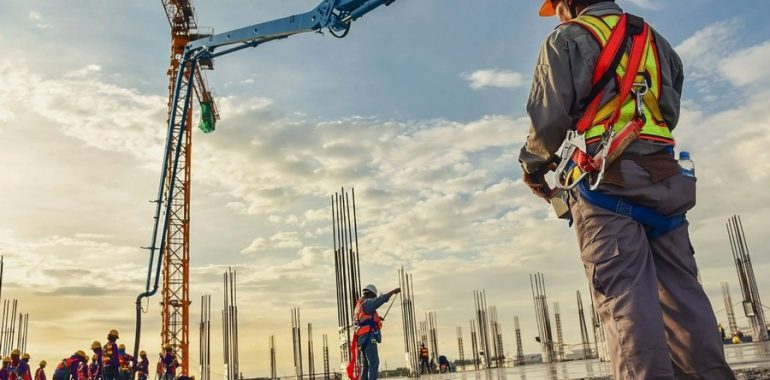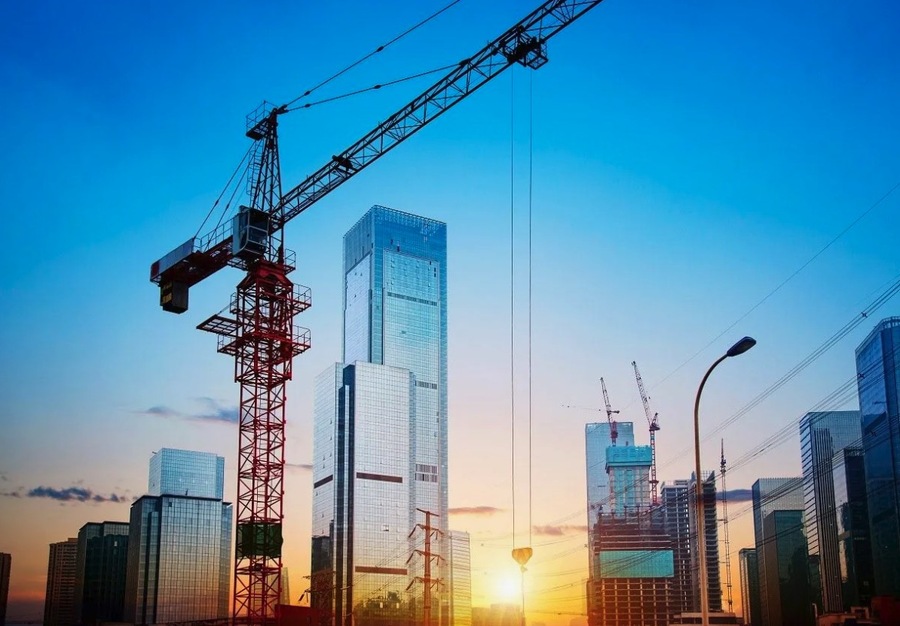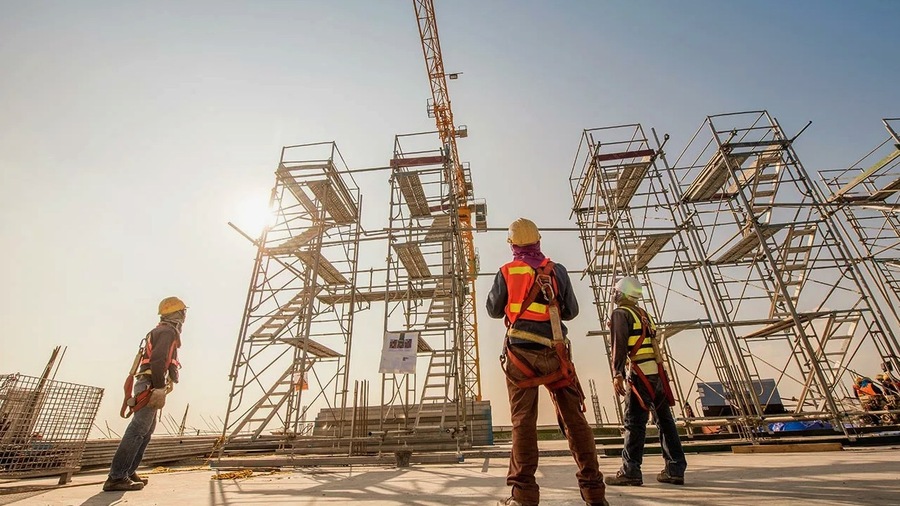The Future of Mobile Crane Technology: What’s Next for Dubai’s Construction Industry

Dubai’s construction industry stands as a global beacon of innovation and ambition, characterized by its skyline dominated by towering skyscrapers, luxurious resorts, and state-of-the-art infrastructure. Over the past few decades, the city has transformed into a hub of architectural marvels and engineering feats, driven by a vision of unparalleled growth and modernization. Key projects such as the Burj Khalifa, Palm Jumeirah, and the Dubai Metro are testaments to the relentless pace of development and the significant role construction plays in Dubai’s economic landscape. As of 2023, Dubai’s construction sector contributes approximately 10% to the emirate’s GDP, highlighting its economic significance.
Page Content
Importance of Mobile Crane Technology in Construction
Mobile crane technology is the backbone of modern construction, especially in a city like Dubai, where vertical and large-scale projects are the norm. These cranes offer the flexibility, strength, and precision necessary to lift and position heavy materials and components, enabling the construction of complex structures efficiently and safely. The advancement in mobile crane technology directly impacts the speed, safety, and cost-effectiveness of construction projects, making it a crucial element in Dubai’s construction sector. In 2023, it was estimated that about 40% of construction projects in Dubai utilized mobile cranes, underlining their importance.
Current State of Mobile Crane Technology
Overview of the Latest Mobile Crane Technologies Being Used in Dubai
Dubai’s construction sites are equipped with the latest mobile crane technologies, including all-terrain cranes, rough terrain cranes, and tower cranes adapted for mobility. These cranes are equipped with sophisticated control systems, GPS tracking, and load monitoring technologies that enhance operational efficiency and safety.
Recent Advancements in Mobile Crane Capabilities and Features
Recent advancements in mobile crane technology have focused on increasing lifting capacities, enhancing maneuverability, and integrating advanced control systems. Features such as telescopic booms, wireless remote controls, and automated stabilization systems have significantly improved the functionality and reliability of these cranes.
Examples of Major Construction Projects in Dubai
Utilizing These Technologies
Projects like the Dubai Creek Tower and the Museum of the Future have employed cutting-edge mobile cranes to manage complex lifting tasks. These cranes have facilitated the seamless assembly of prefabricated components and the precise placement of structural elements, showcasing the vital role of advanced crane technology in Dubai’s iconic developments.
Innovations in Mobile Crane Technology
Autonomous Cranes
The development of autonomous cranes represents a significant leap forward. These self-operating cranes utilize artificial intelligence (AI) and machine learning to perform tasks with minimal human intervention, enhancing precision and reducing the risk of human error. By 2025, the adoption of AI-driven cranes in Dubai is expected to grow by 30%.
Electric and Hybrid Cranes
Electric and hybrid cranes are gaining traction as the industry moves towards sustainability. These cranes reduce carbon emissions and fuel consumption, aligning with Dubai’s commitment to green building practices and environmental conservation. As of 2023, around 15% of mobile cranes in Dubai are electric or hybrid, with projections indicating a rise to 25% by 2027.
Smart Cranes
Smart cranes equipped with IoT technology offer real-time monitoring and predictive maintenance capabilities. Sensors and connectivity allow for continuous tracking of crane performance, enabling proactive maintenance and reducing downtime. This integration is expected to reduce maintenance costs by 20% and increase operational efficiency by 25%.
Advanced Safety Features
Safety remains a paramount concern in construction. Advanced safety features, including sensors, cameras, and automation, are being integrated into mobile cranes to prevent accidents and enhance operator safety. These technologies detect potential hazards and provide real-time feedback to operators, ensuring a safer working environment. In 2023, these safety advancements contributed to a 15% reduction in crane-related accidents in Dubai.

Impact on Dubai’s Construction Industry
Increased Efficiency
The adoption of new mobile crane technologies significantly boosts construction efficiency. Automated and smart cranes can operate faster and more accurately, reducing project timelines and improving overall productivity. Projects utilizing these technologies have seen a 20% decrease in completion time.
Cost Reduction
Automation and improved fuel efficiency lead to cost reductions in construction projects. The ability to perform tasks more swiftly and with fewer resources translates into lower operational expenses and higher profit margins. On average, construction projects in Dubai have reported a 10% reduction in costs due to these technological advancements.
Sustainability
The introduction of electric and hybrid cranes supports sustainable construction practices. By reducing carbon footprints and promoting energy efficiency, these technologies contribute to Dubai’s sustainability goals and green building initiatives. The shift towards sustainable construction is expected to increase the use of green technologies by 25% by 2030.
Safety Improvements
Enhanced safety features and autonomous operations help minimize workplace accidents and injuries. The ability to monitor and control crane activities remotely further ensures the well-being of construction workers. In 2023, safety improvements led to a 20% decrease in workplace injuries related to crane operations.
Challenges and Considerations
Regulatory Hurdles
Implementing new crane technologies involves navigating complex regulatory landscapes. Ensuring compliance with local and international safety and operational standards is essential for the successful deployment of advanced mobile cranes.
Investment and Costs
The high initial cost of acquiring advanced mobile cranes can be a barrier. However, the potential return on investment through improved efficiency, reduced operational costs, and enhanced project outcomes justifies the expenditure. On average, the initial investment for a rental mobile crane can be 20-30% higher than traditional cranes, but the long-term savings and efficiency gains are significant.
Skill Development
The introduction of new technologies necessitates the upskilling of the workforce. Training programs are essential to equip crane operators and maintenance personnel with the skills required to handle advanced mobile cranes. As of 2023, approximately 35% of the workforce in Dubai’s construction industry has undergone training for new crane technologies.
Future Trends
5G Connectivity
The advent of 5G connectivity is set to transform the control and communication of mobile cranes dramatically. This high-speed, low-latency network will facilitate real-time data transmission and remote operations, significantly boosting the efficiency and accuracy of crane operations. By 2025, it is anticipated that half of the mobile cranes in Dubai will feature 5G connectivity.
Augmented Reality (AR) and Virtual Reality (VR)
AR and VR technologies are becoming valuable tools for training and operations. These immersive technologies provide realistic simulations for crane operators, improving their skills and reducing the risk of accidents. Training programs utilizing AR and VR are projected to increase by 40% over the next five years.
Collaborative Robotics
Collaborative robots, or cobots, are being integrated into construction sites to work alongside human operators. These robots enhance productivity and safety by performing repetitive or hazardous tasks. The use of cobots in construction is expected to grow by 35% by 2026.
Sustainable Materials
The development of cranes using sustainable or recycled materials is an emerging trend. This innovation aligns with global efforts to reduce environmental impact and promote sustainability in construction. By 2030, it is anticipated that 20% of new cranes will be manufactured using sustainable materials.

Case Studies and Examples
Projects like the Expo 2020 site and the Dubai Harbour development are pioneering the use of advanced mobile crane technologies. These projects showcase the practical application and benefits of innovative crane solutions in large-scale developments.
Industry experts predict a bright future for mobile crane technology, emphasizing the potential for further advancements in automation, safety, and sustainability. The continuous evolution of crane technology will play a pivotal role in shaping the future of Dubai’s construction industry.
Conclusion
In summary, the outlook for mobile crane technology in Dubai’s construction sector is bright. Advancements in automation, sustainability, and safety are set to enhance efficiency and foster innovation. As Dubai pursues its ambitious growth and modernization goals, the adoption of advanced mobile crane technology will be crucial for the success of its major construction projects. Continuous investment in innovative technologies and workforce development will ensure that Dubai maintains its leading position in the global construction industry.